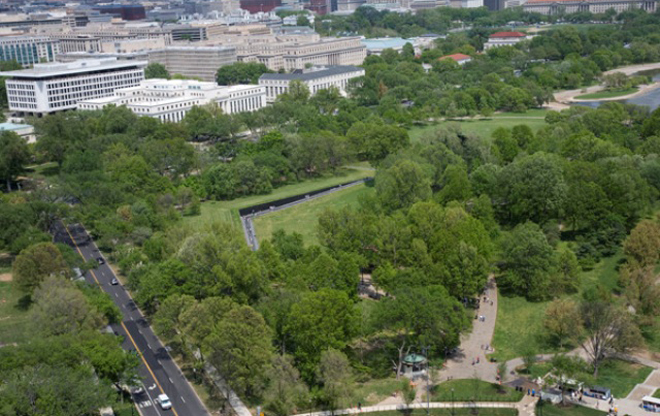
Aerial View
The V-shaped memorial is a gash in the ground; it has become a place of healing. Powerful in its simplicity, architect Maya Lin intended the memorial to “allow everyone to respond and remember.”
Image: National Park Service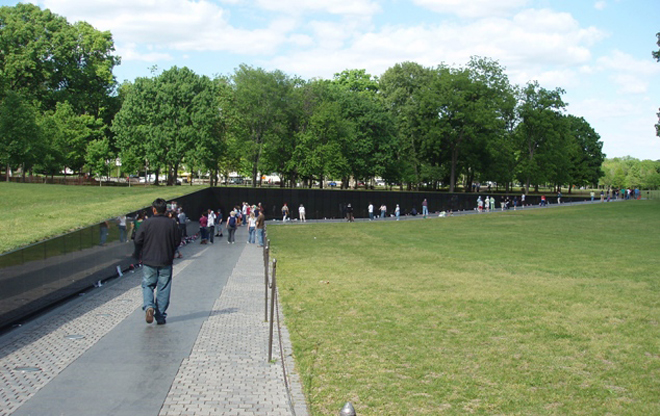
A Solemn Visit
A visit to the wall can be solemn; people can be seeking the name of a loved one or recognizing immense sacrifice.
Image: National Park Service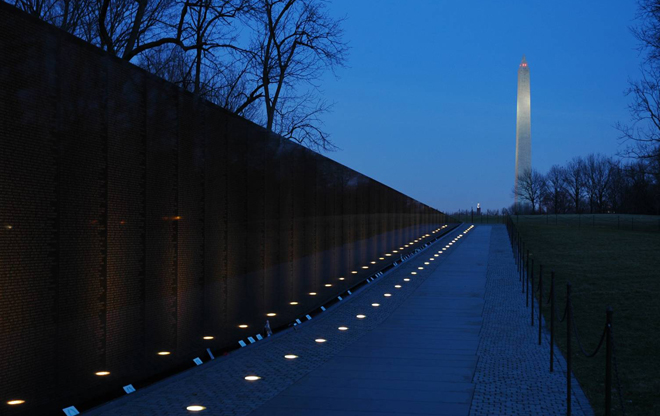
Looking Toward the Washington Monument
One angle of the wall points toward the Washington Monument, the other points toward the Lincoln Memorial. In 2007 the memorial was ranked tenth on the American Institute of Architects “List of America’s Favorite Architecture.”
Image: National Park Service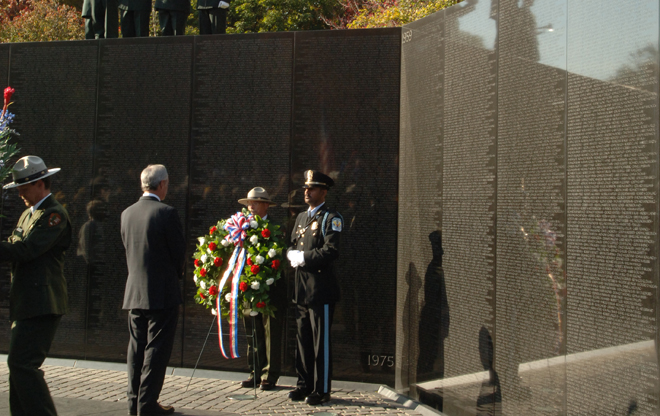
Ceremony
Ceremony at the wall. The Vietnam Veteran’s Fund continues to support the memorial and its maintenance. The memorial also has a very active veteran’s volunteer program, and yellow-shirted veterans regularly interact with visitors.
Image: National Park Service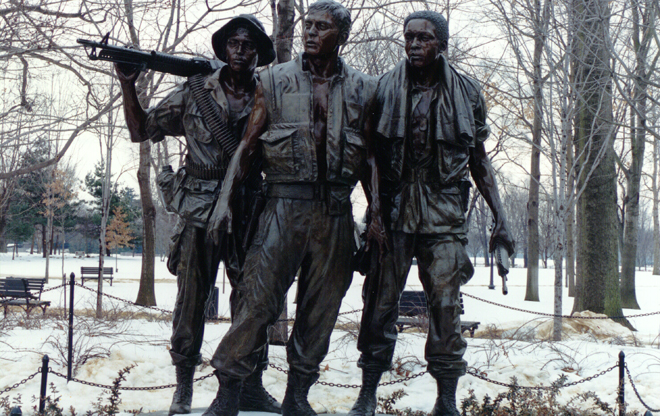
The Three Servicemen
The Three Servicemen statue represents ethnic diversity of the troops; they look toward the wall.
Image: National Park Service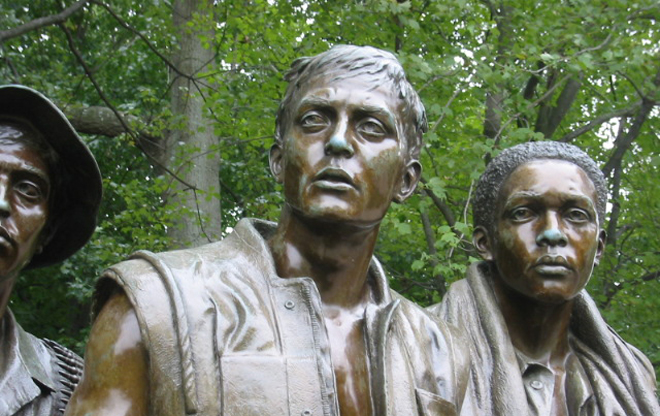
Three Servicemen Statue
Close-up of the Three Servicemen statue.
Image: National Park Service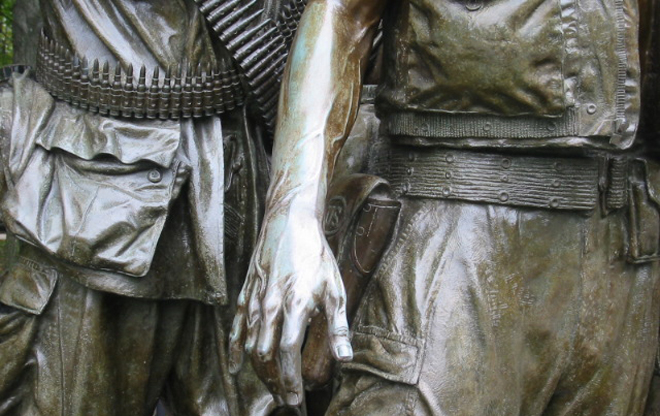
Statue Detail
Close-up showing detail of the Three Servicemen statue.
Image: National Park Service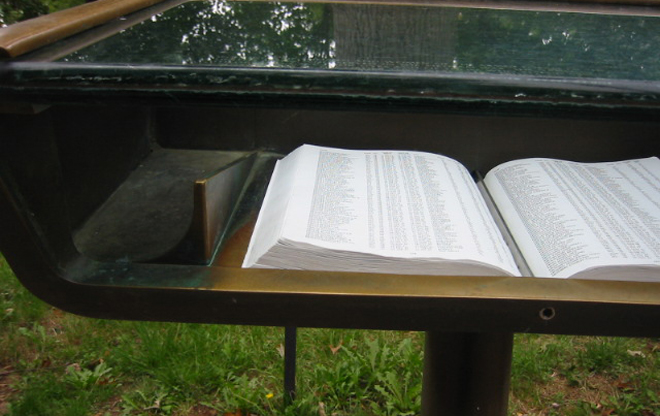
Directory of Names
Directories help visitors locate names on the wall.
Image: National Park Service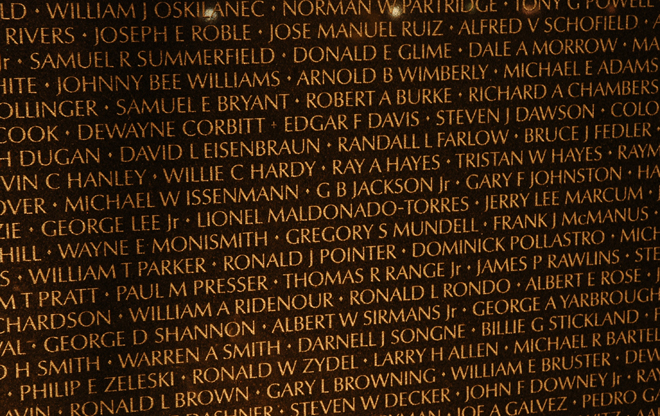
Inscribed Names
Names inscribed on the wall are updated as status changes.
Image: National Park Service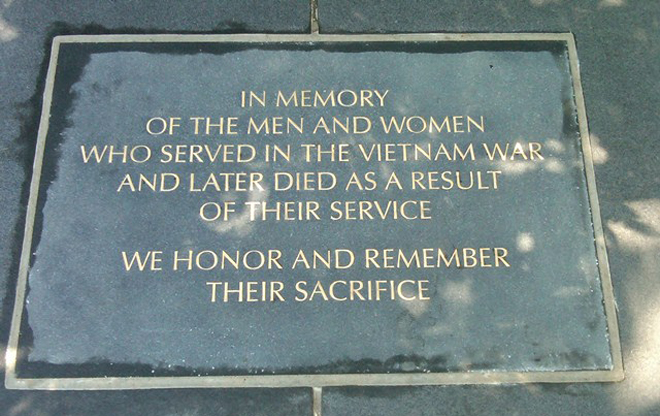
Plaque by the Three Servicemen
A plaque installed in the paving near the Three Servicemen statue.
Image: National Park Service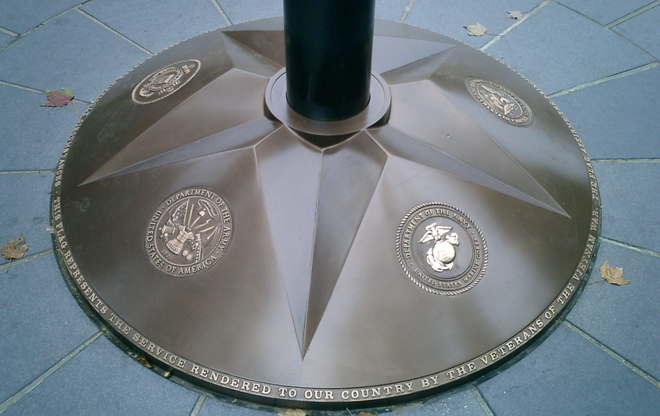
Flagpole Base
The flagpole base illustrates different service branches.
Image: National Park Service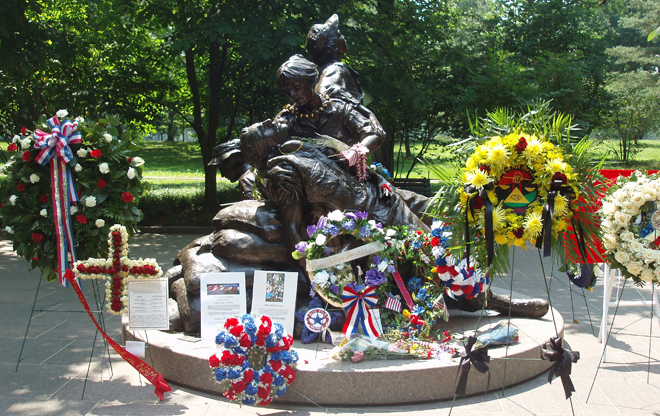
Wreaths at the Memorial
Wreaths are often placed at areas within the memorial; here shown is the Vietnam Women's Memorial
Image: National Park Service